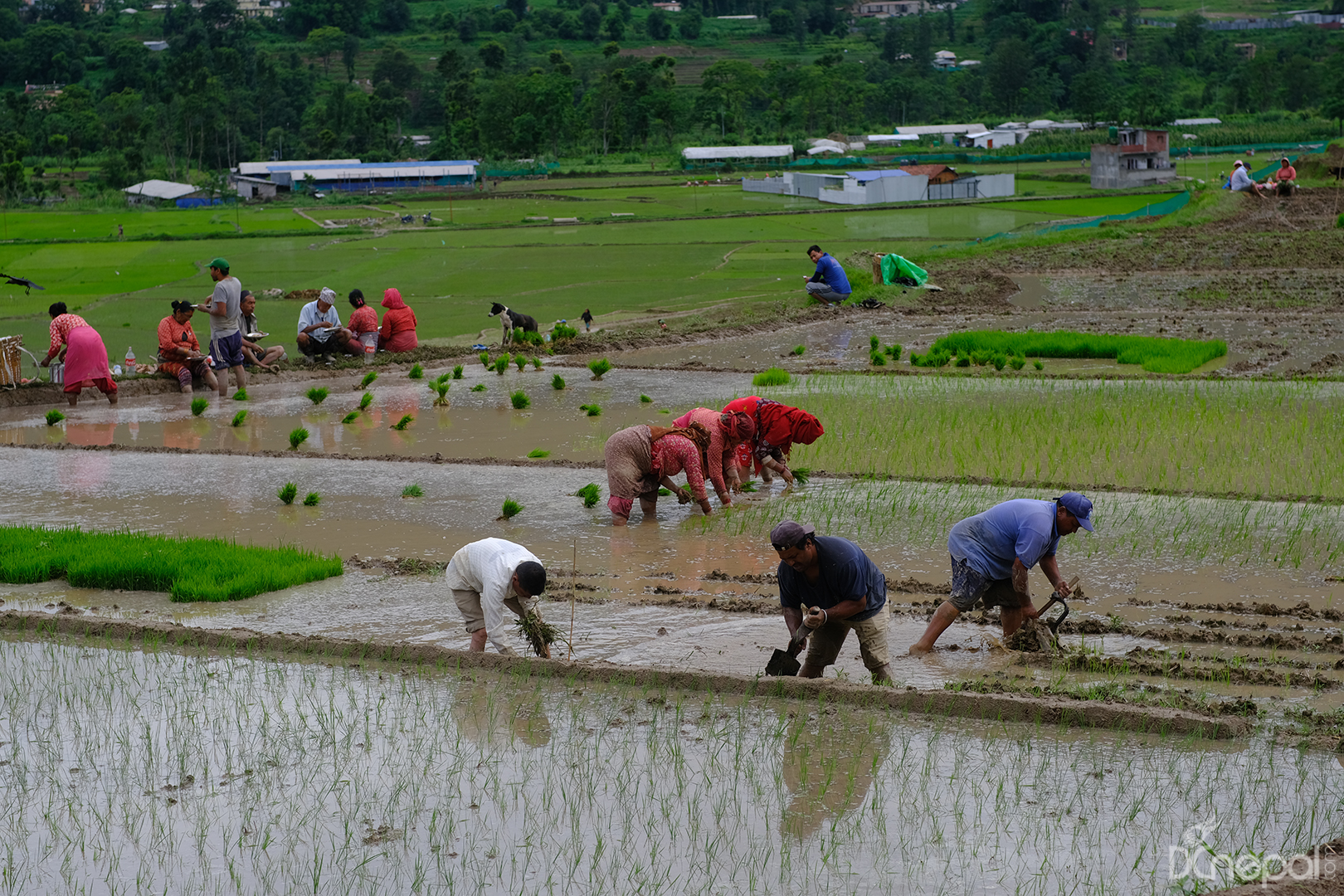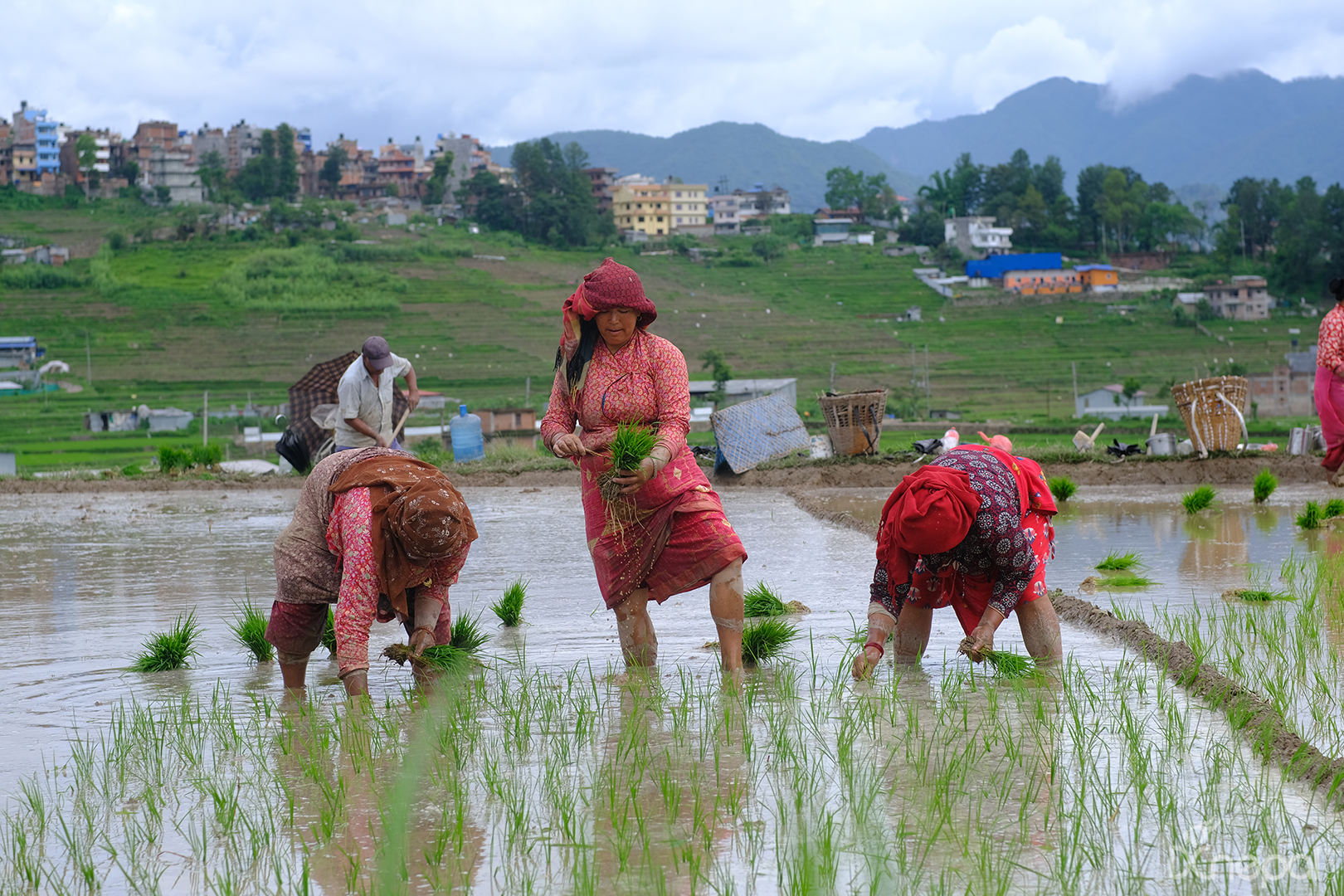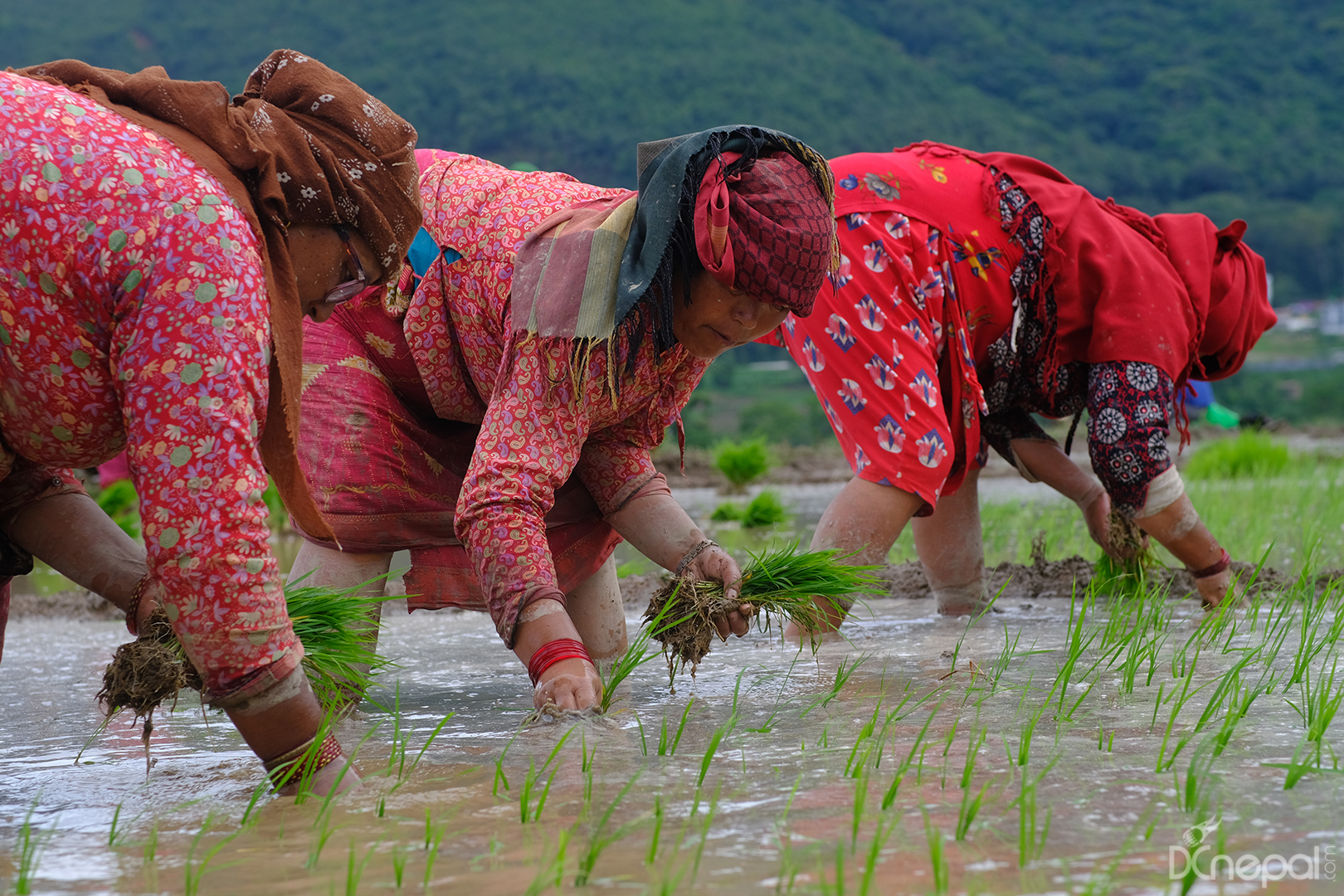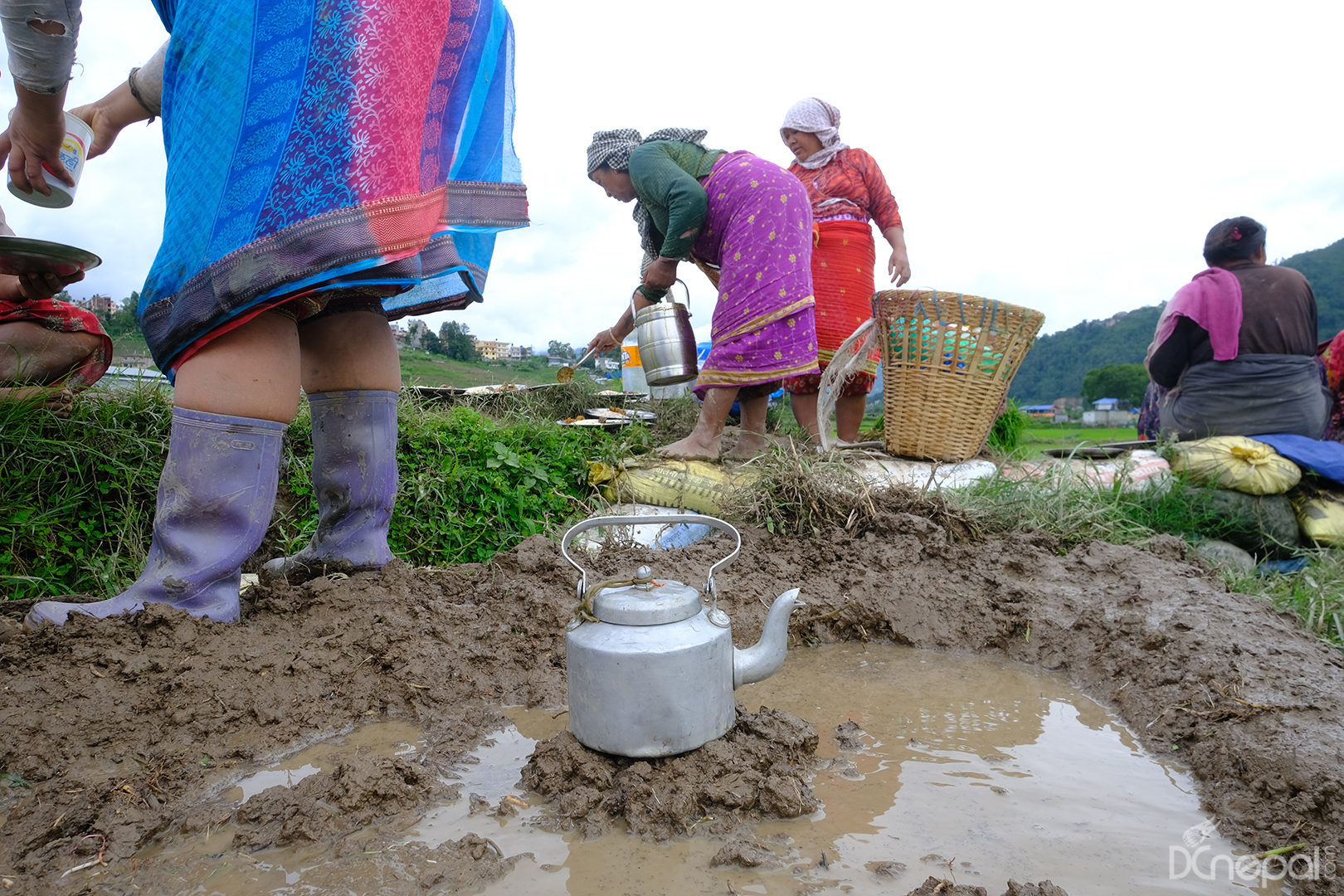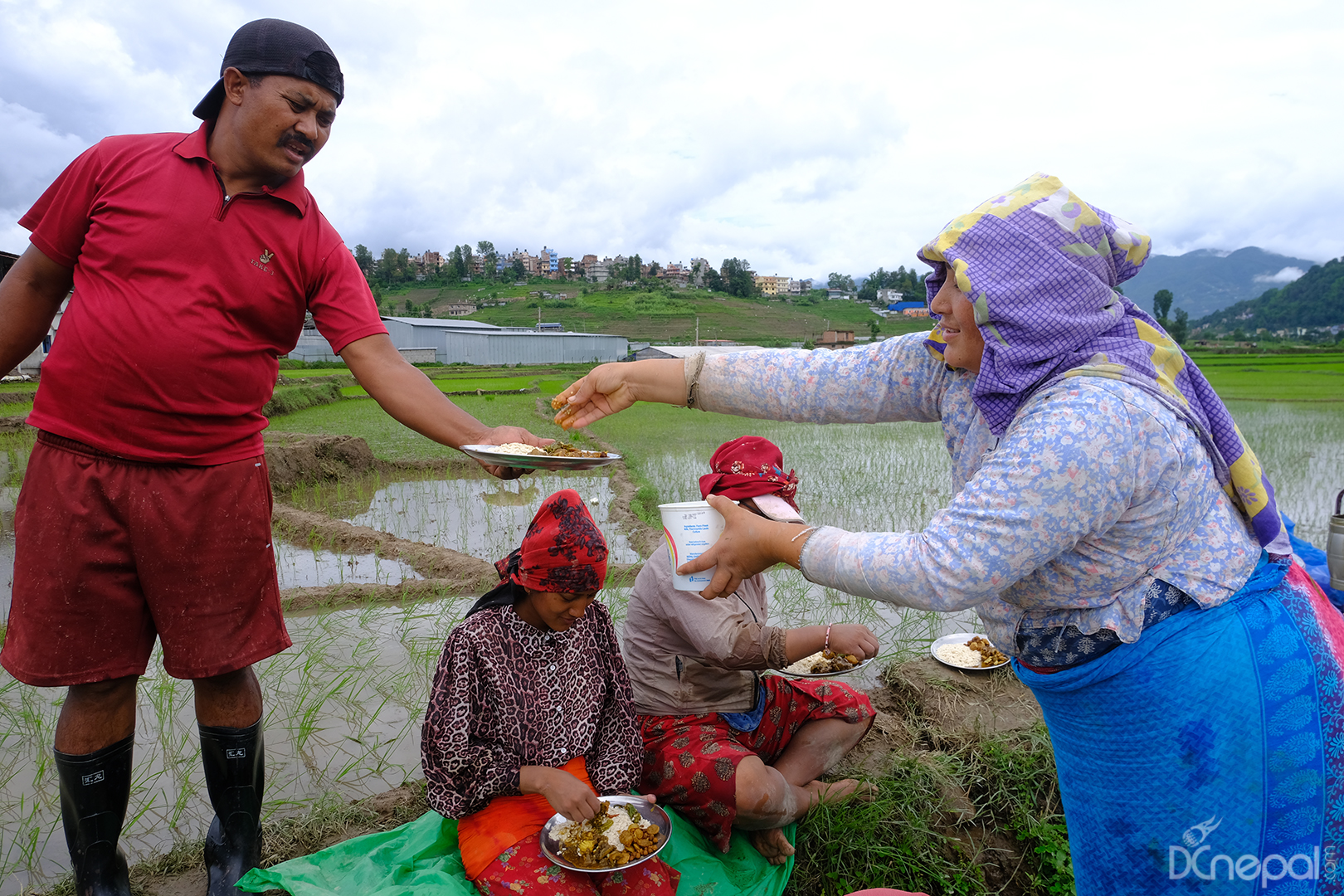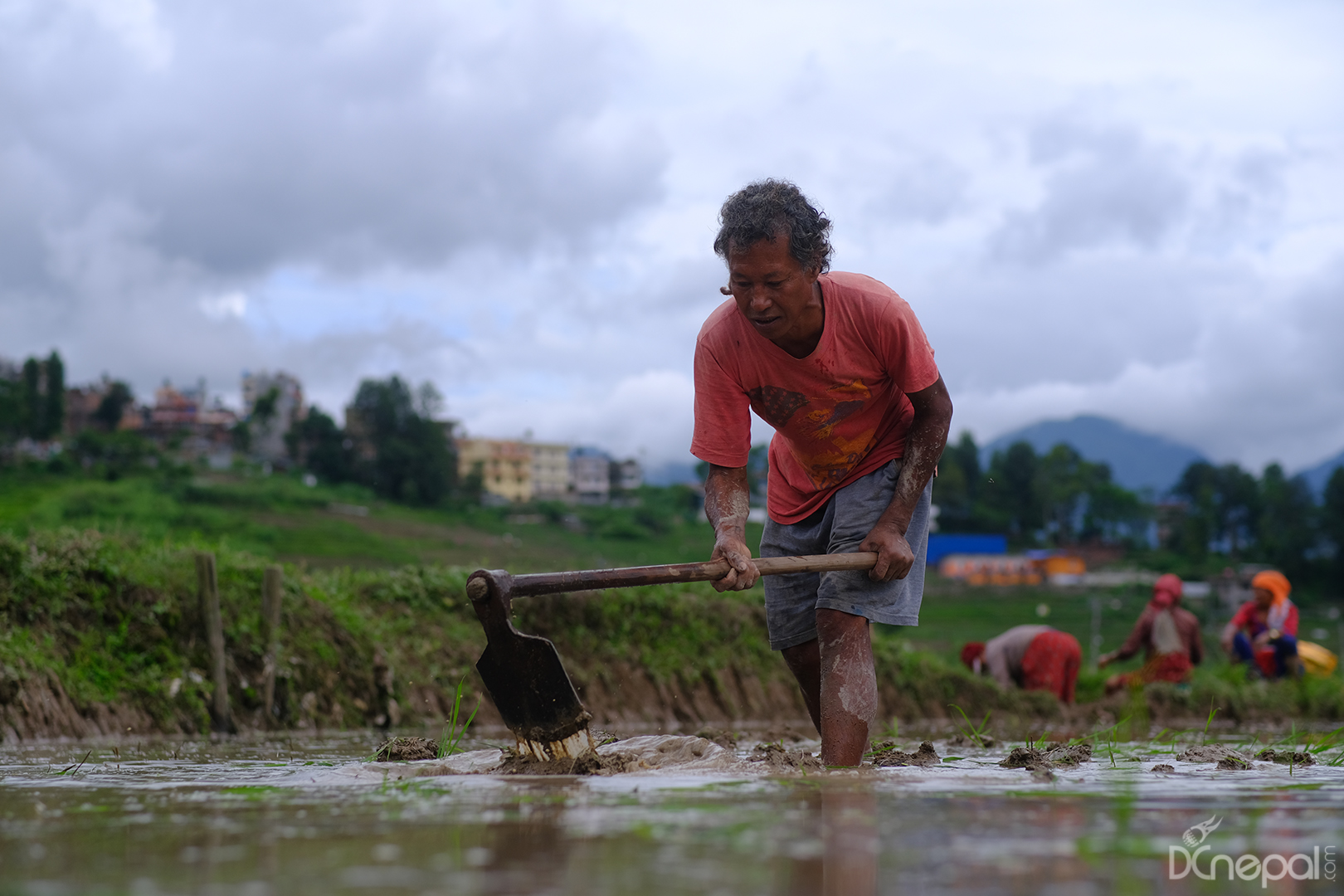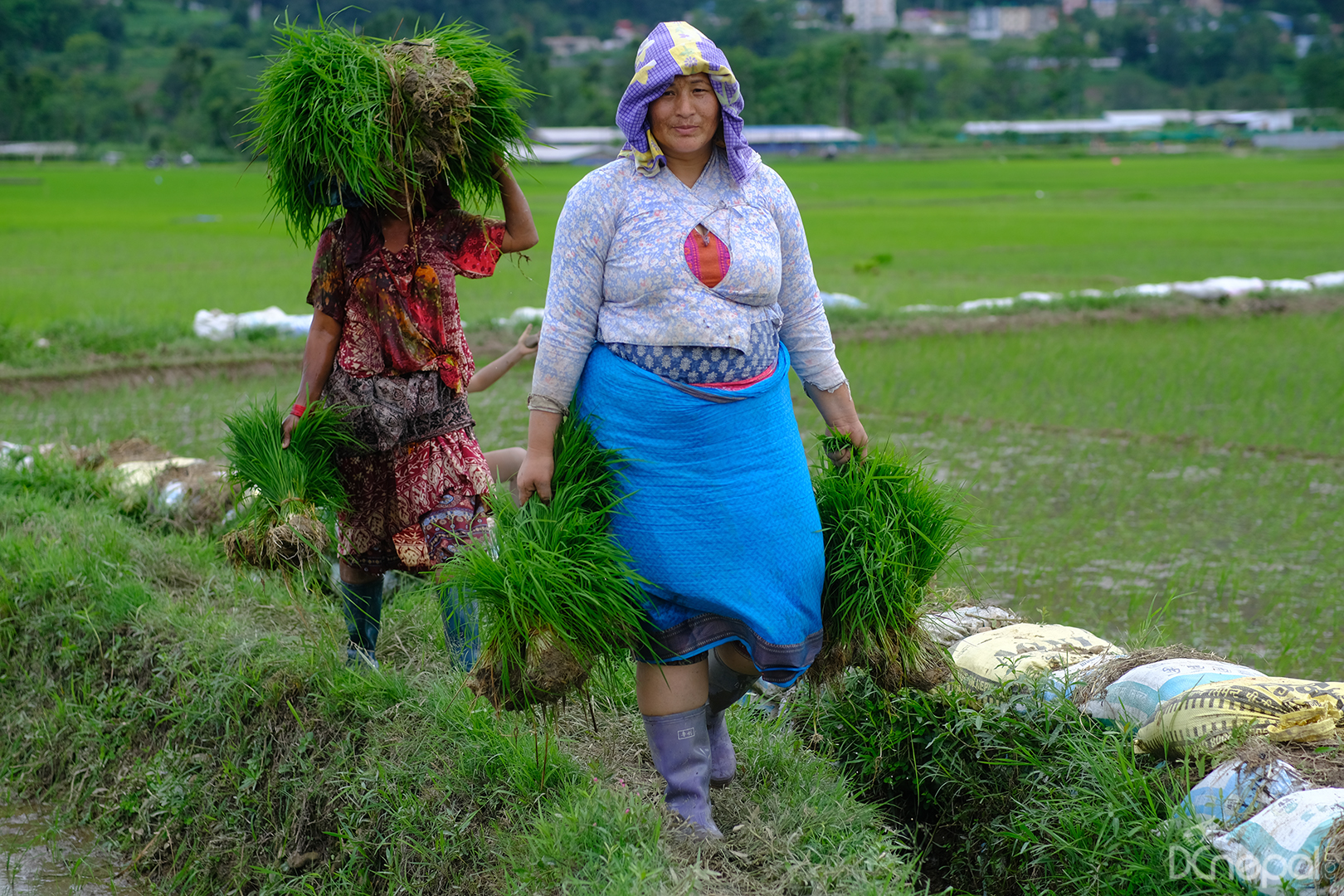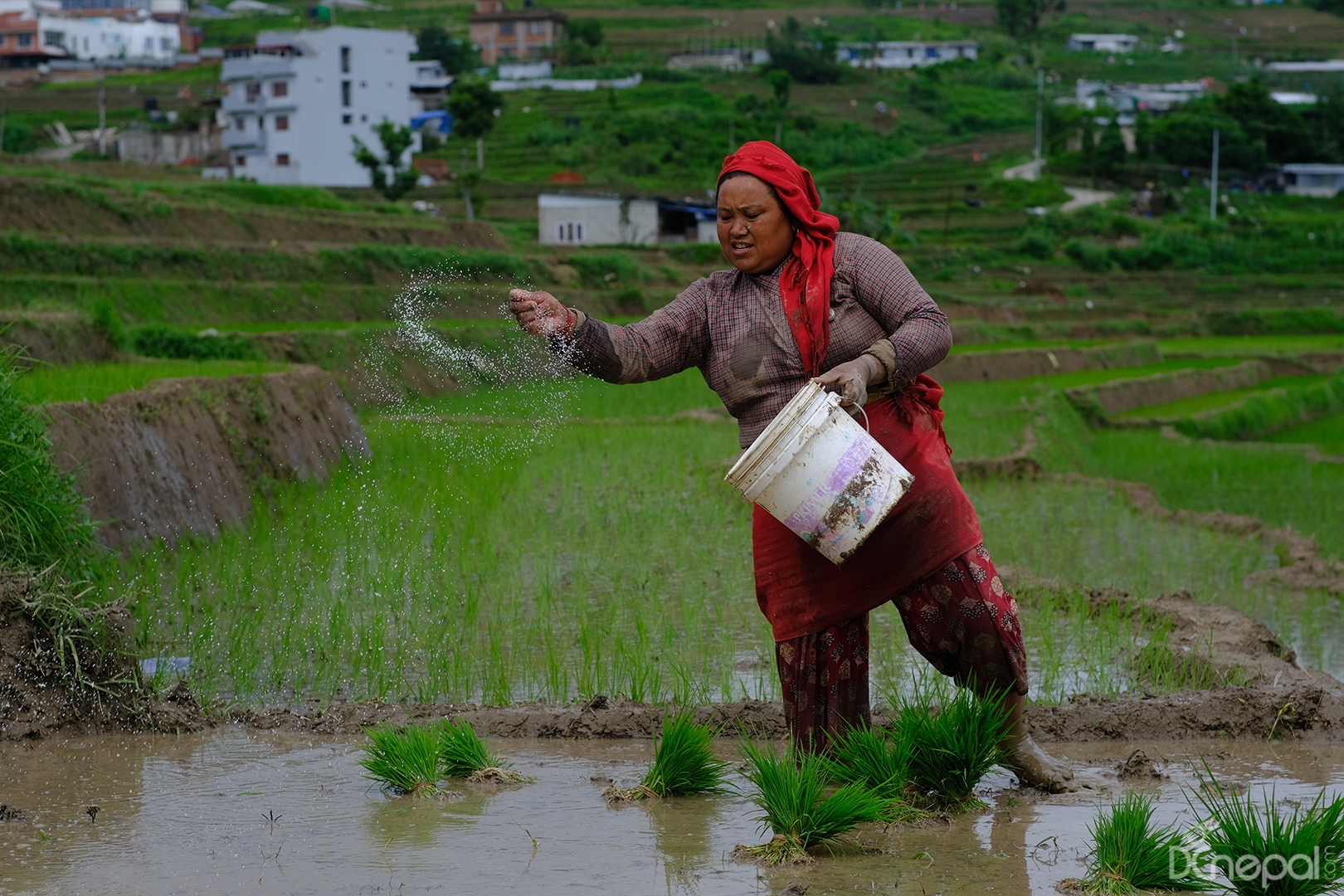Nepal celebrates 20th National Paddy Day, honoring its rich agricultural heritage (Pictures from Khokana)
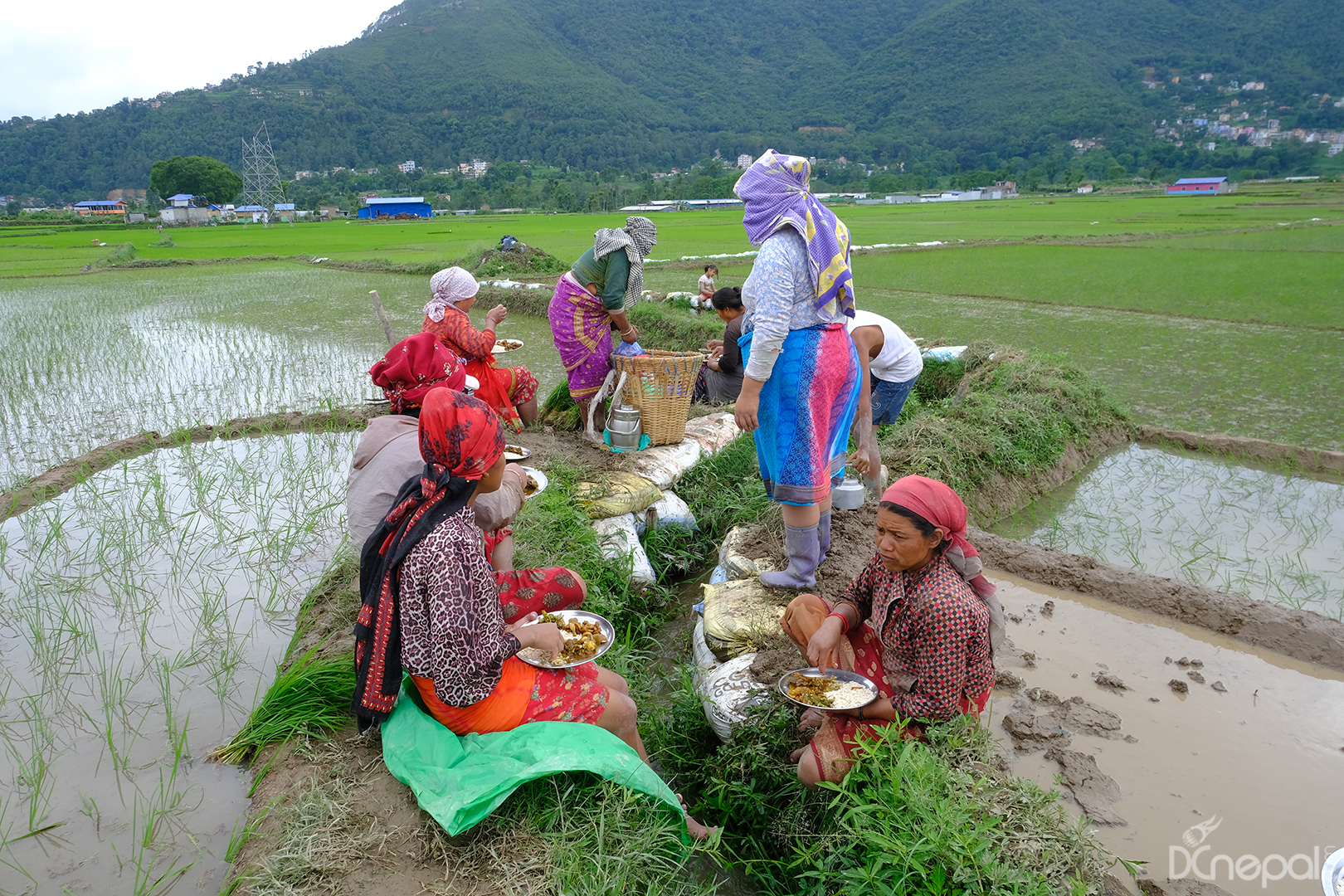
Kathmandu, June 30. Nepal is celebrating the 20th National Paddy Day today, emphasizing the significance of rice cultivation in the country. This annual event holds great importance for Nepali agriculture and is deeply rooted in the country’s tradition.
In 2061 BS, the then His Majesty’s Government announced the celebration of National Paddy Day, recognizing the vital role of agriculture and honoring the hard work of farmers across the nation.
Rice farming occupies a crucial place in the lives of the Nepali people, erving as the primary source of livelihood for a majority of the population. With paddy cultivation covering a substantial portion of Nepal’s cultivable land, National Paddy Day stands as a significant occasion to honor and celebrate the country’s rich agricultural heritage.
Traditions and Cultural Festivities
Celebrating National Paddy Day involves various traditions and cultural festivities. In the tranquil fields, farmers plant paddy saplings while singing melodious folk songs. These songs express their excitement about creating lush paddy fields and producing sufficient amount of rice. These activities not only contribute to agricultural productivity but also bring a festive atmosphere to the farming communities.
Despite the scorching mid-summer heat, families eagerly participate in the age-old tradition of rice planting. This laborious task becomes an enjoyable experience as they engage in playful banter and laughter while working together.
Furthermore, the consumption of curd and beaten rice is an integral part of the celebrations, signifying nourishment, prosperity, and the bountiful harvest of rice. The festival provides an opportunity for communities to reconnect with their agricultural roots and celebrate the invaluable contributions of farmers to the nation’s sustenance.
Moreover, the consumption of curd and beaten rice holds a significant place in the celebrations. These symbolic foods represent nourishment, prosperity, and the abundant rice harvest.
The Benefits of Curd and Beaten Rice: Instant Practicality and Health Advantages
The consumption of curd and beaten rice on this day is believed to bring a refreshing and invigorating effect to the body. Beaten rice, known as “chiura” in the local language, holds a special importance during National Paddy Day. It offers a practical and convenient alternative to regular rice as it requires minimal preparation and can be enjoyed instantly.
In Nepali culture, curd holds a special place. It is customary to consume curd before beginning important works, whether it’s leaving home for significant events or setting off on international journeys. Similarly, bidding farewell to loved ones often involves offering curd and applying a red Tika on their foreheads as a symbol of well-wishes. Tasting curd before embarking on journeys instills a sense of confidence and positivity.
Curd is also renowned for its health benefits. During National Paddy Day, curd consumption takes center stage as it is believed to possess various medicinal properties. Curd aids digestion and promotes gut health, making it especially beneficial during the festival period when people may experience stomach-related issues due to exposure to mud and rain.
Decades ago, rice was considered a luxury and exclusive to the wealthy, but today it has become a staple food for the majority of the population. Therefore, National Paddy Day is not only a festive occasion but also a testament to the country’s deep-rooted agricultural heritage. It also serves as a reminder of the vital role that rice cultivation plays in the lives of Nepali people
Facebook Comment
latest Video
Trending News
- This Week
- This Month


